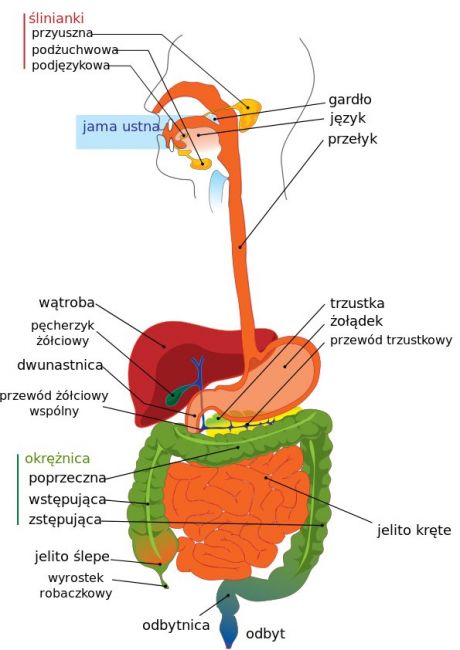A novel biosensor for enteric pathogens

Układ pokarmowy człowieka z zaznaczonym jelitem grubym, fot. public domain
According to the World Health Organisation, it is estimated that in 2005 alone 1.8 million people died from diarrheal diseases. Improved diagnostic tools are thus necessary to act promptly against these dismal statistics.
The intestinal epithelium constitutes a major barrier against
infections. It comprises a single layer of cells that line the stomach
and colon. This restricts the entry of toxins and pathogens, while
selectively absorbing nutrients that sustain the body. However,
pathogens have devised ways of destroying the integrity of the
intestinal epithelial barrier and compromising the normal absorption of
water causing diarrhoea.
To advance detection of enteric pathogens, scientists on the EU-funded CELLTOX (Integration of living cells with organic transistors for the rapid detection of toxins and enteric pathogens) project developed a novel type of biosensor. This innovative device was based on the principle of using live epithelial cells grown on an organic electrochemical transistor (OECT).
Partners exploited the ability of organic electronic materials to conduct both electronic and ionic carriers. During the project, scientists demonstrated the integration of human epithelial cell layers with OECTs as a means of assessing barrier tissue integrity. When the cells get attacked by an enteric pathogen, the monolayer is disrupted and ions migrate into the polymer, switching the transistor to the off state.
In comparison with existing diagnostic methods, the CELLTOX device exhibited markedly higher sensitivity in the detection of a variety of toxins and pathogens, including the food borne pathogen Salmonella typhimurium. Through testing in milk, they demonstrated the feasibility for diagnostics in food and safety applications.
Low cost fabrication of the OECT guarantees portable and inexpensive sensors that can be used for high-throughput processing of samples. Despite the end of the project, the consortium is currently working on a prototype that will demonstrate this principle.
Overall, the CELLTOX device constitutes a highly sensitive, dynamic sensor for in vitro diagnostics of pathogens and toxins. Moreover, this device design can be adapted to suit various applications in medical diagnostics, agriculture, and environmental protection.
published: 2015-09-29